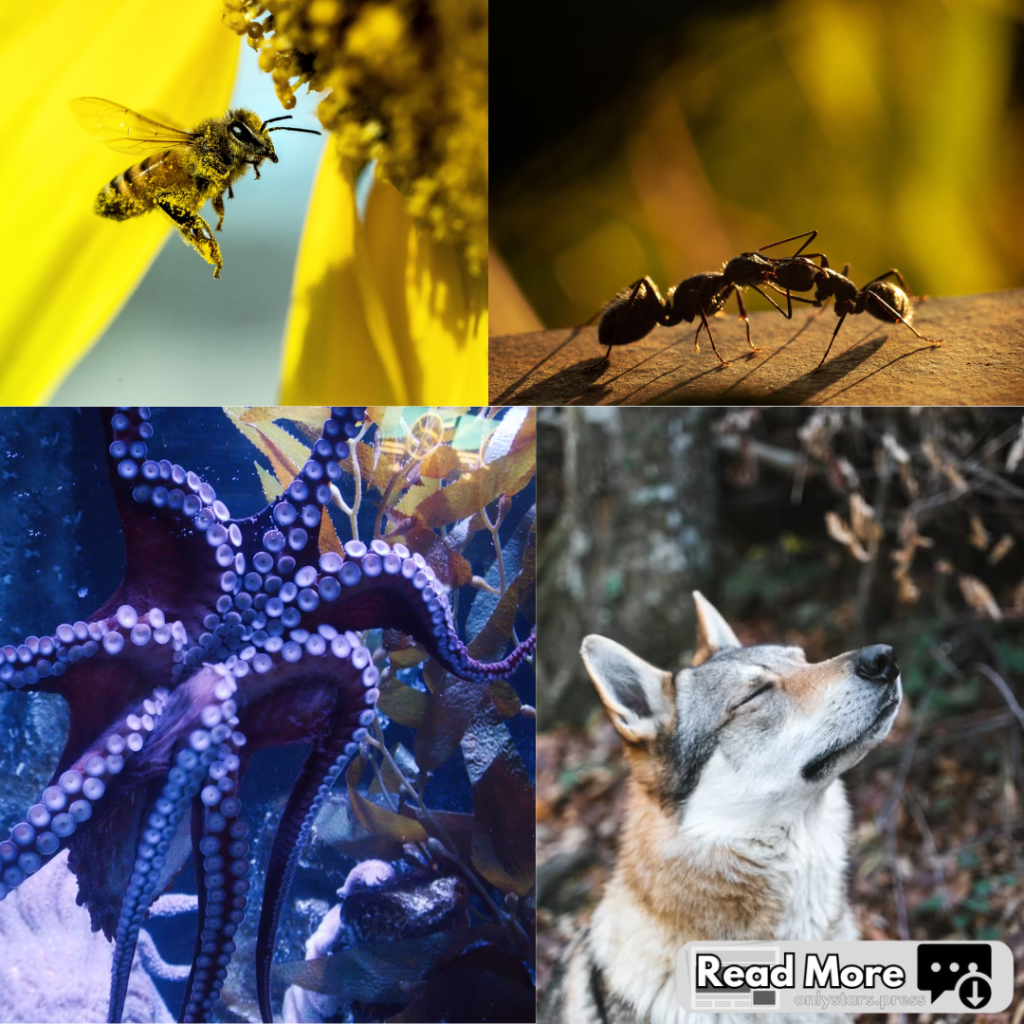
1. The Honeybee’s Dance of Discovery
Honeybees have mastered the art of nonverbal communication through the “waggle dance.” When a worker bee discovers a food source, it returns to the hive and performs a precise dance, waggling its body to show the direction and distance of the find. This intricate movement serves as a living GPS, using the angle of the waggle in relation to the sun to guide fellow bees. It’s a flawless system of communication that helps the hive efficiently collect nectar and pollen, ensuring the survival of the colony.
2. The Colorful Conversations of Cephalopods
Octopuses, cuttlefish, and other cephalopods can communicate through the incredible power of color change. These creatures have specialized skin cells, known as chromatophores, which allow them to shift hues within seconds. Whether it’s signaling aggression, blending into their surroundings, or attracting a mate, cephalopods use this dazzling ability to convey a wide range of emotions and intentions. Think of it as living art—a constantly shifting canvas that speaks volumes, without a single sound.
3. Ants and Their Silent Chemical Signals
Ants may not speak, but they are skilled chemists who use pheromones to send messages throughout their colony. When an ant discovers food, it releases a trail of pheromones, guiding others to the source. It’s a scent-based communication system, invisible yet effective, ensuring that every ant plays its part in the survival of the group. The complexity of these chemical signals is comparable to a sophisticated language, where each scent carries specific meaning, from a call to arms to a simple food find.
4. Wolves and Their Expressive Body Language
Wolves communicate through a complex system of body language. Each movement—from the tilt of their heads to the position of their tails—conveys a message. A submissive wolf may lower its body and tuck its tail, while a dominant wolf stands tall and confident. These subtle gestures help maintain order within the pack, coordinate hunts, and resolve conflicts. It’s a silent yet highly effective method of communication, one that’s essential for social harmony and survival.
5. Elephants’ Seismic Conversations
Elephants have an extraordinary way of talking to each other without using sound—through seismic communication. These gentle giants can detect low-frequency vibrations traveling through the ground, allowing them to communicate over great distances. Whether warning of danger or signaling the presence of water, these vibrations carry vital information, and the earth itself becomes their medium. This unique communication method underscores the remarkable intelligence and sensitivity of elephants.
6. The Peacock Spider’s Silent Courtship Dance
Despite their small size, male peacock spiders are a masterclass in visual communication. During courtship, the male performs a striking dance, displaying his vibrant colors and intricate patterns to impress a mate. This silent performance is a visual feast, akin to a miniature peacock tail, signaling his genetic quality and fitness. Through this dramatic display, the peacock spider speaks the language of attraction—no words needed, only movement and color.
7. Fireflies and Their Luminous Love Language
Fireflies are nature’s own light show, using flashes of bioluminescence to communicate. These glowing insects use specific patterns of light to attract mates or ward off competitors. Each species has its own unique “light code,” similar to Morse code, where each flash carries meaning. Their luminous conversations serve a crucial role in mating rituals, creating a beautiful, glowing spectacle that reminds us how powerful and enchanting nonverbal communication can be in the animal world.
8. Whales’ Silent Signals of the Sea
While whales are known for their majestic songs, they also communicate silently through physical gestures. Breaching, tail-slapping, and fin-waving are all visual signals that convey important messages within their pods. These actions complement their vocalizations, providing a multifaceted way of maintaining social bonds, coordinating activities, and navigating the vast ocean. Whales remind us that communication is not just about sound—sometimes it’s the silence that speaks the loudest.
9. Chameleons: Mood Rings of the Animal Kingdom
Chameleons are famous for their ability to change color, a skill they use for much more than camouflage. By altering their skin tones, chameleons communicate their emotional state, social rank, or mating intentions. A darkened hue may signal aggression, while brighter colors attract potential mates. It’s like wearing your emotions on your sleeve—except, with chameleons, they can change their “outfit” in an instant. Through their vibrant and ever-shifting colors, these reptiles offer a striking example of the complexity of silent communication in nature.
These incredible examples of nonverbal communication in the animal kingdom remind us that the world is full of fascinating ways creatures share information—sometimes, silence really does speak louder than words.

